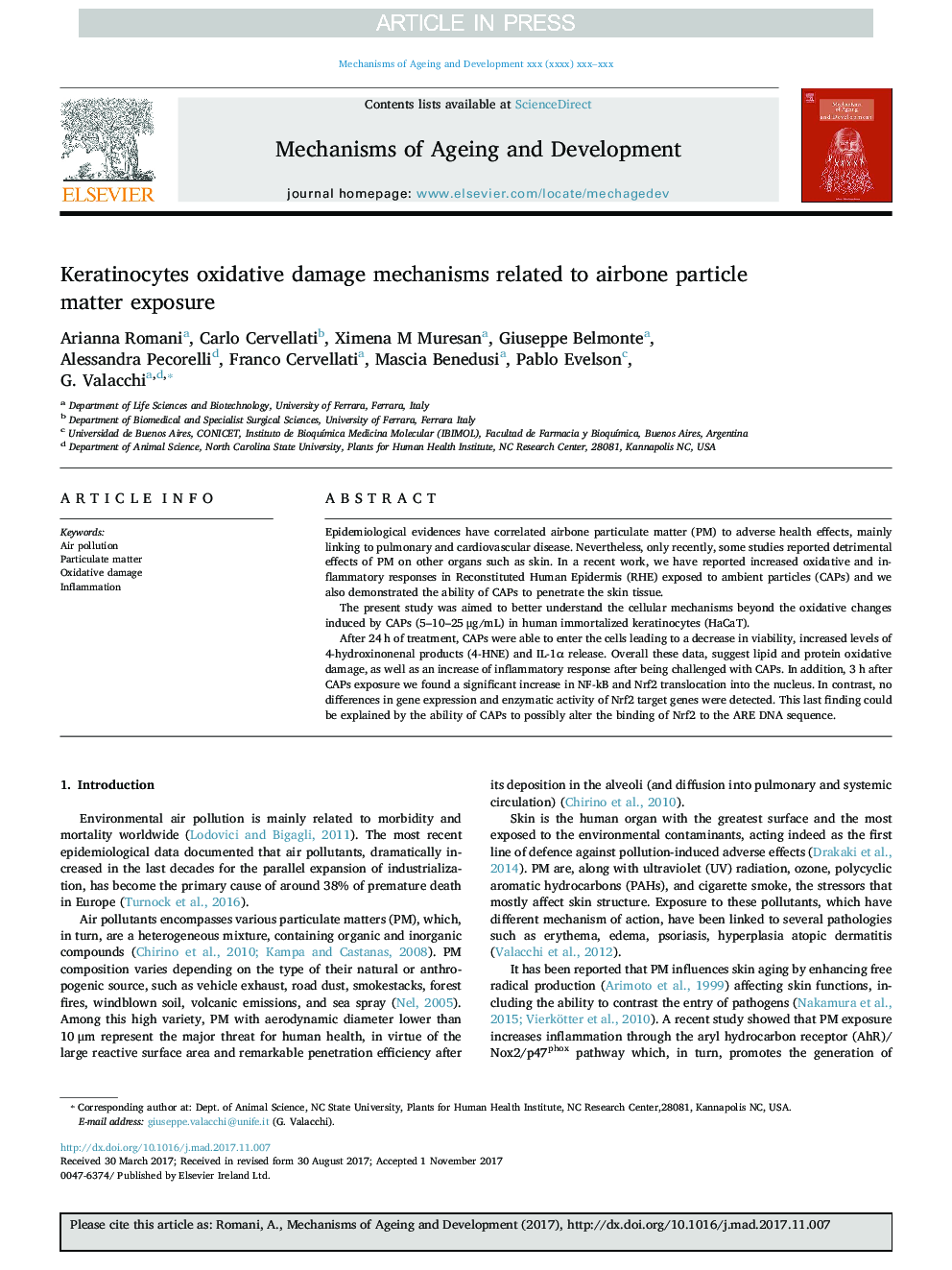| Article ID | Journal | Published Year | Pages | File Type |
|---|---|---|---|---|
| 8284691 | Mechanisms of Ageing and Development | 2018 | 10 Pages |
Abstract
After 24 h of treatment, CAPs were able to enter the cells leading to a decrease in viability, increased levels of 4-hydroxinonenal products (4-HNE) and IL-1α release. Overall these data, suggest lipid and protein oxidative damage, as well as an increase of inflammatory response after being challenged with CAPs. In addition, 3 h after CAPs exposure we found a significant increase in NF-kB and Nrf2 translocation into the nucleus. In contrast, no differences in gene expression and enzymatic activity of Nrf2 target genes were detected. This last finding could be explained by the ability of CAPs to possibly alter the binding of Nrf2 to the ARE DNA sequence.
Related Topics
Life Sciences
Biochemistry, Genetics and Molecular Biology
Ageing
Authors
Arianna Romani, Carlo Cervellati, Ximena M Muresan, Giuseppe Belmonte, Alessandra Pecorelli, Franco Cervellati, Mascia Benedusi, Pablo Evelson, G. Valacchi,
